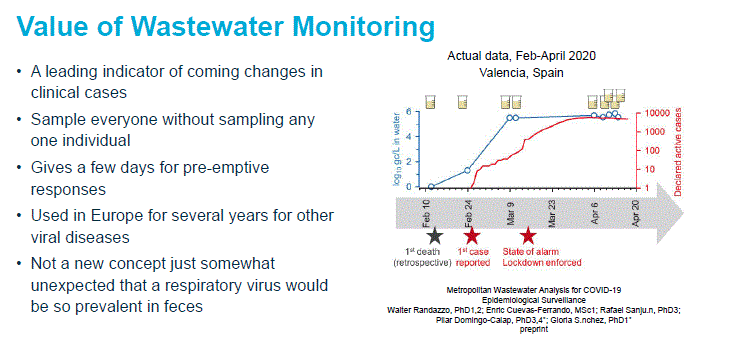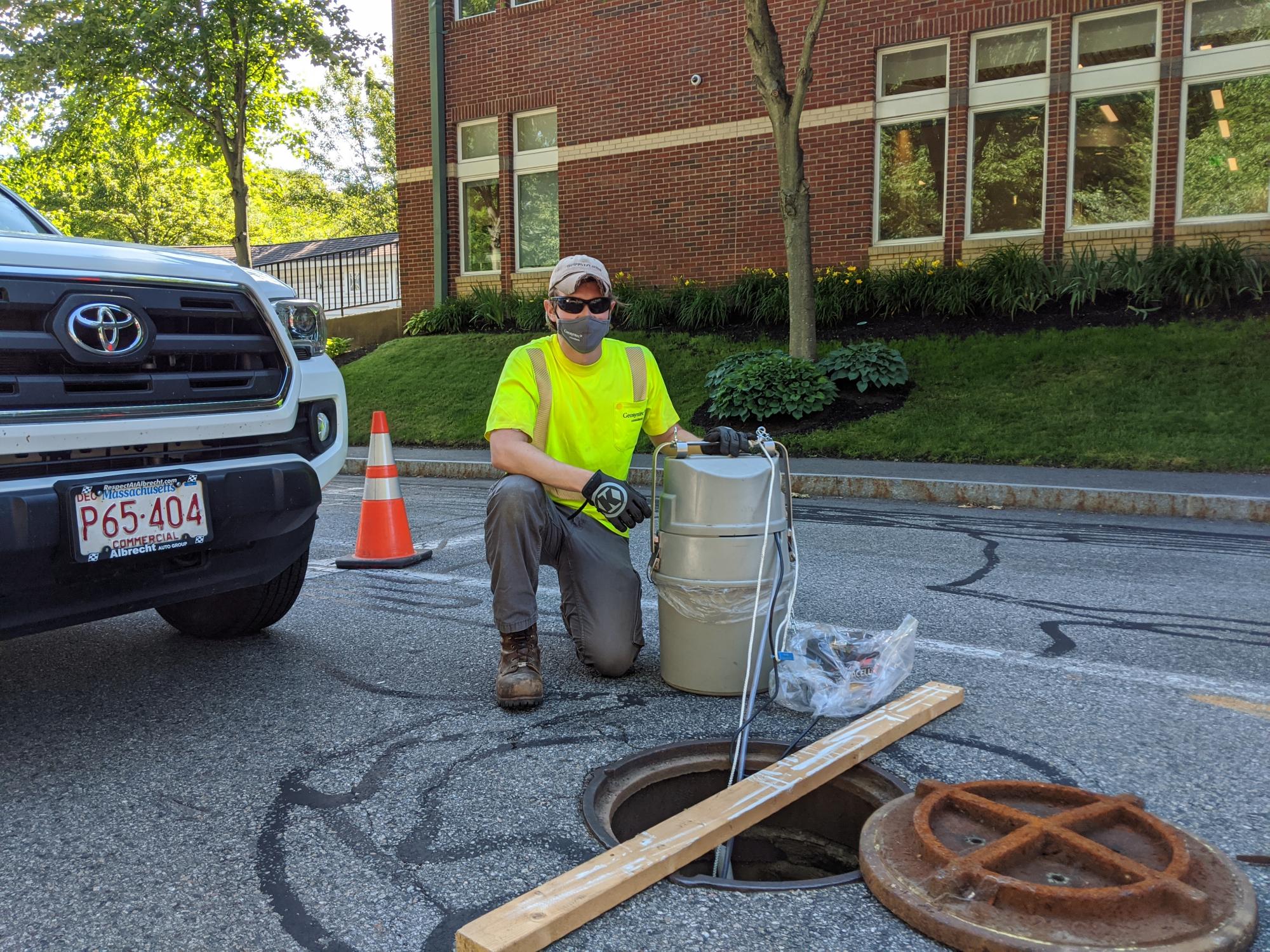The information contained in this article is not intended as legal advice and may no longer be accurate due to changes in the law. Consult NHMA's legal services or your municipal attorney.
As municipalities continue to manage the effects of the current pandemic, locating virus hotspots has become a critical task. Key constraints in finding hotspots are the lack of human testing capacity and the fact people often only seek out testing after they become symptomatic. So, human testing is a lagging indicator for municipalities seeking advance warning of a pending outbreak. Wastewater monitoring is an increasingly widespread method for detecting viral load days to weeks before symptoms arise in the population, indicating the potential for viral spread to inform data-driven decision making.
The Science
Recent research on the occurrence of the SARS-CoV-2 virus (the virus that causes COVID-19) in sewage indicates that the virus concentration often increases well before patient cases are reported. Sewage analysis can also monitor viral load contributions from carriers who are asymptomatic or have mild cases of COVID-19. This is a valuable tool for public health agencies to monitor the spread of the viral infection in their communities and can also be used to inform where there are areas with more infected individuals than others. Lift stations in a sewer system can also be sampled to alert public health officials to specific communities that may be hot spots for infection risk. Periodic sewage analysis for SARS-CoV-2 can provide a sentinel for the onset of a surge in infections in time for the community to take protective actions designed to stem the magnitude of infections. These analyses can also provide a basis for increasing or safely relaxing social distancing and sheltering in place guidelines as the virus concentrations in the sewage increase or decrease over time.
Geosyntec, an international consulting firm with two offices in New Hampshire, has been a leader in working with municipalities, academic institutions and assisted living facilities across North America to deploy wastewater monitoring as an early warning system for the virus.

The Research
Geosyntec is working with universities and other research institutions to evaluate long term viral load trends in in sewage throughout the pandemic as the curve of case counts rises, flattens and slowly reduces. This will provide informed data for the effectiveness of Stay at Home, reopening, social distancing measures and eventually the effectiveness of immunization.
Duane Graves leads Geosyntec’s testing and research lab in the US. He reports “We test for the total viral load in the wastewater and calibrate to total flow. Most importantly we can monitor fluctuations over time, such that a low flat curve may show some viral load, perhaps from isolated asymptomatic residents, then a steady upward climb would indicate an outbreak and spread. These wastewater detections can precede symptoms and most importantly detect viral load from asymptomatic residents as well.”
The Method
The best current approach has been to install a wastewater sampler at key system points such as lift stations or manholes to collect aliquots on short intervals each morning during peak use. Samples can be collected and frozen over longer periods and shipped weekly for long-term monitoring. A typical program will include collection of two 24-hr composite samples per week.
Days or a week before symptoms arise in the population, a spike in total viral load will indicate the early initiation of viral spread to inform decision making. Additionally, individual testing doesn’t have to be conducted, avoiding the burden and expense on the municipal population, until it is warranted by the early indication of wastewater monitoring. Depending upon the utility layout and the sewage system, other building and sample locations can be established as well to monitor specific areas if warranted.
Geosyntec detects the actual SARS-CoV-2 virus through a multiplex RNA analysis of three specific genome mapped RNA sequences. Many other testing services either screen for a surrogate or test a single piece of the RNA which is much less accurate and defensible. Geosyntec also places positive, non-infectious virus controls in samples which are detected at the lab to verify that the sample was properly preserved and shipped. Some labs do not include positive controls, so hypothetically a sample that was loaded with live virus, that sits on the tarmac in Manchester waiting for a plane and overheats, disinfecting the virus in the process, will arrive at the lab and give a false “clean” or low-viral-load reading. Geosyntec can measure the degradation of the positive control, in which case the sample is identified as not valid and thus avoiding false negatives.
The Challenge
Municipalities are faced with increasing budget constraints and pressure to provide data-driven decisions about mitigating the impacts of the pandemic on their communities. Wastewater monitoring provides timely data to public agencies to help them make informed decisions about appropriate, community-specific responses that will protect the population. Municipalities can monitor the sewer system for the presence and concentration of SARS-CoV-2 virus and give their communities the best chance they can get to stay safe in these unprecedented times.
More details can be found on our COVID-19 webpage or contact Stefanie Lamb at SLamb@geosyntec.com (603-782-4072) or Mary deFlaun at MdeFlaun@geosyntec.com (609-895-1400).
